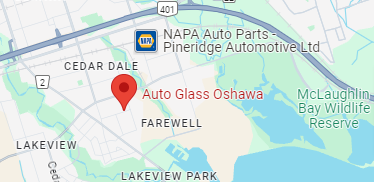Windshields in electric vehicles are doing a lot more than just blocking wind and rain these days. They’re helping with visibility, safety, insulation, and even vehicle sensors. This reflects a broader trend: windshields have become central to how EVs are designed, experienced, and maintained.
And when it comes to this evolution, Tesla’s approach is particularly unique—pushing boundaries in design, materials, and integrated technology in ways that set it apart from other manufacturers.
Tesla’s Glass Philosophy: Size, Simplicity, and Software
Tesla has a distinct design language that often leads with minimalism. This is clear in their glasswork. Models like the Model 3 and Model Y feature large, fixed panoramic roofs and expansive windshields that create a spacious feel and support the vehicle’s structure. These design choices contribute to aerodynamics and overall safety.
One standout is the Cybertruck’s enormous single-piece windshield paired with a unique, giant single wiper system. Tesla chose a 48-volt motor and a Scotch yoke mechanism to operate the wiper. This system is both unconventional and mechanically smart, designed to efficiently sweep a huge glass surface without overlapping blades.
Tesla’s commitment to software over hardware extends here, too. Instead of a head-up display or built-in dashboard overlays, Tesla relies on a central screen to relay all driving information. This lets them keep the windshield clear of distractions but shifts more responsibility to the driver to look away from the road.
Material Matters: Acoustic and Thermal Performance
Tesla windshields incorporate acoustic glass and infrared layers to reduce cabin noise and block solar heat. For instance, the Model 3’s panoramic glass roof filters 98% of UV rays and 81% of heat. Tesla calls its system “360-degree acoustic glass,” though some rear windows still use single-pane glass, which diminishes uniform sound dampening.
Compared to other EV makers, Tesla takes a distinctive path. Most competitors use double-laminated acoustic glass throughout the vehicle. Hyundai, BMW, and Lucid, for example, lean heavily into full-surface laminated panels to ensure quiet cabins across all seating positions. Mercedes adds infrared-reflective coatings to cut cabin heat and UV exposure.
Armour Glass: Bold Claims, Limited Reality
Tesla’s much-publicized “Armour Glass,” especially for the Cybertruck, is rooted in ambitious patent filings. These describe multi-layer composites with advanced materials like borosilicate. However, as of now, this patented high-durability glass isn’t in any production model. While Tesla markets its vehicles with phrases like “shatter-resistant,” real-world materials used today are closer to upgraded laminated options than the breakthrough materials in patents.
In contrast, other manufacturers are moving more cautiously. Some explore polycarbonate for weight reduction and added resilience. Ford and Rivian are investing in heated windshield tech with conductive films, while Lucid and BMW incorporate augmented reality displays that turn the windshield into a smart interface.
The Role of Windshields in Sensor-Driven Safety
Tesla integrates its Advanced Driver Assistance Systems (ADAS) cameras directly into the windshield, relying on vision-based software rather than radar or LiDAR. This approach simplifies hardware and reduces costs, but makes the windshield critical to driving safety.
Most EV makers take a multi-sensor approach. BMW, Hyundai, and others embed a mix of cameras, radar, and LiDAR into their windshields or rooflines. This creates redundancy, especially useful in poor visibility. These systems also demand recalibration whenever the windshield is replaced—a process that adds to service time and cost across all EV brands.
This approach simplifies hardware and reduces costs but makes the windshield critical to driving safety. For consumers comparing safety features, it’s helpful to consult independent safety ratings like those from the National Highway Traffic Safety Administration.
How Much Does It Cost to Replace a Tesla Windshield?
Tesla’s integrated and oversized windshields come with a high replacement cost. On average, replacing a Tesla windshield runs between $500 and $1,500, depending on whether aftermarket or OEM glass is used. Recalibrating ADAS sensors adds another $50 to $150.
This makes Tesla’s auto glass services considerably more expensive than those for traditional cars. If you’re wondering how auto glass prices compare, EVs like Teslas sit firmly at the higher end due to the complexity and tech integration.
Tesla also imposes specific limits: no more than three repairs per windshield, no repairs if the inner layer is damaged, and no repairs near the passenger airbag zone. These rules are strict and designed for safety, but they often mean full replacement is the only option.
Comparing to Other EVs: Broader Innovations, Fewer Risks
Other EV manufacturers are experimenting with different windshield enhancements. BMW’s new iDrive turns the entire windshield into a panoramic head-up display. Lucid and Hyundai are advancing holographic overlays that blend driving data into the field of view.
Meanwhile, the Ford Mach-E and Volkswagen ID.4 use more conventional designs but still offer panoramic roofs, rain-sensing wipers, and acoustic laminated glass. These systems may not be as daring as Tesla’s single-blade Cybertruck setup, but they balance innovation with proven functionality.
In terms of repairs, auto glass Oshawa reports that non-Tesla EVs often have more flexibility in glass sourcing and fewer calibration demands.
Final Thoughts
So, are Tesla windshields different? Yes—both in how they’re built and what they represent. Tesla takes risks on design and tech, often ahead of the curve but not without trade-offs. Their windshields are central to the car’s structural and sensory systems, and while the materials may not be as advanced as the marketing suggests, the integration is undeniably forward-thinking.
For drivers evaluating electric car windscreen options, Tesla offers a bold path, while other automakers focus on more evenly distributed innovation. Whichever direction you lean, it’s worth understanding the costs, risks, and benefits involved.
Want help figuring out your windshield options or looking for a quote? Contact our team to get started.

